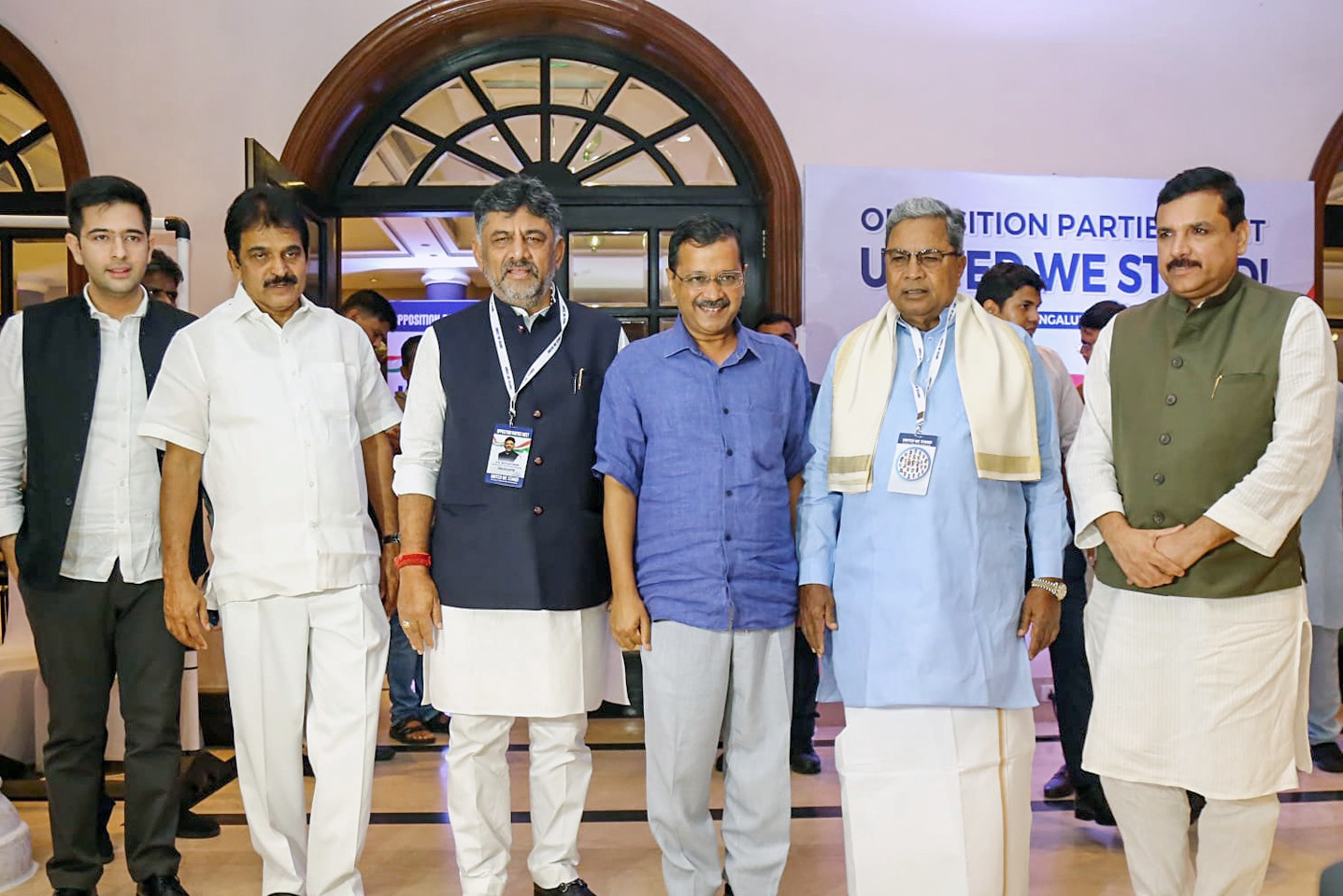


The meeting of the Opposition parties started on Monday in Bengaluru in Karnataka, a state that the Congress recently snatched from the BJP in the Assembly elections. It may look like a mega meet of 26 parties that are joining hands to defeat the BJP in 2024. But a closer look at the gathering reveals it to be about building the perception that their coming together means a defeat for the BJP. It’s as if the only thing that is standing between the Opposition and a victory is their failure to unite. But even that perception of “unity leads to victory” may not be easy to build. The meeting got hobbled even before it started when NCP’s Ajit Pawar walked out of the Maha Vikash Aghadi with a substantial section of his uncle Sharad Pawar’s cadre and joined hands with the BJP in Maharashtra. The move sent shockwaves through the Opposition and the meeting was declared as cancelled, only to be revived by Congress at a later date. The focus is now to show that the Opposition is not ruffled by the sudden curveball that has been thrown at them, thus denting their hope of winning a substantial number of Lok Sabha seats from Maharashtra’s 48.
But beyond perception there is the “small” problem of substance, and it is here that the Opposition numbers do not add up. It is obvious by now that whatever be the incremental victories by the “united” Opposition in different parts of the country, what it needs is a complete sweep in some of the big states such as Uttar Pradesh in the north, with its 80 seats, or a sweep in states such as Maharashtra (48 Lok Sabha seats), West Bengal (42), Bihar (40), Tamil Nadu (39), Madhya Pradesh (29), Karnataka (28), Gujarat (26) and Rajasthan (25), for the Opposition to be considered a serious player. Right now, except for maybe West Bengal and Tamil Nadu, where Mamata Banerjee’s TMC and M.K. Stalin’s DMK seem well entrenched, the other states are in no way delivering a “sweep” for the Opposition. In fact, the Opposition may have to be lucky even to find a foothold in states such as Gujarat, Rajasthan and Madhya Pradesh because the Narendra Modi factor will come into play in the Lok Sabha elections. Andhra Pradesh with its 25 Lok Sabha seats and Odisha with its 21 are not being counted here, because their ruling parties, YSRCP and BJD, respectively, are not part of the Opposition alliance and have kept their options open. As for Telangana, in spite of all the muscle flexing by K. Chandrasekhar Rao, the state has only 17 Lok Sabha seats and hypothetically speaking, that is the maximum he can bring to the table. Not that this fact has stopped him from venturing into other states with a 600-car convoy, just to show his home audience that he is a big player nationally. Even in Karnataka, which the Congress swept recently, there is no guarantee that it can carry forward that sweep in the Lok Sabha elections, because people often vote differently in the Lok Sabha elections, looking at national issues and a national leadership.
Take the case of Uttar Pradesh, where the BJP is going from strength to strength. The NDA in 2019 had crossed the 50% threshold in the state, by winning nearly 52% of the votes. The SP (17.96%), BSP (18.11%) and RLD (1.69%) together touched 39.23%. The Congress on its own got 6.41%. This time, the BSP under Mayawati is nowhere to be seen in the Opposition alliance. Where does Mayawati’s absence pull down the Opposition alliance’s vote percentage? And if it is a three-way election, then the BJP benefits because the Opposition vote gets split.
Then there is the problem of vote transfer. As apparent from Uttar Pradesh in 2019, SP’s votes transferred to Mayawati, giving the BSP 15 seats, while the SP got only 5, implying that BSP’s vote did not come SP’s way. And what about the matter of who gets how many seats to contest from? Take the example of Punjab, a state with 13 Lok Sabha seats. It’s a state where the AAP is consolidating its hold and seems to be in a comfortable position to win as many of the 13 as possible. How many seats will it spare for the Congress in Punjab, if the two parties are in alliance? Similarly, how many seats will Mamata Banerjee give to the Congress and the Left if all three join hands in Bengal? She believes that she does not need any support and can defeat the BJP on her own. Where does that leave the Left and Congress? There are too many contradictions here.
As for the Congress, it’s in a direct fight with the BJP in around 200 seats nationally and has to win a majority of them to be taken seriously. One Karnataka does not make a summer. As 2018 showed, in spite of losing Karnataka, Madhya Pradesh, Rajasthan and Chhattisgarh, the BJP swept these states in the 2019 Lok Sabha elections. Hence, things will probably boil down to inspiring leadership—to PM Modi, to be specific. Of course, BJP does not have any room to be complacent, one of the reasons why it has gone into election mode and has started stitching up alliances in different states.
In other words, the Opposition unity is all about individual regional leaders sending a message back home to their respective voters about how big and important they are nationally, with the potential to become Prime Minister—so that all the votes go to them in their respective states. Hence, presently, it’s all about creating the perception of victory. When reality bites, it has to be seen if the unity holds.